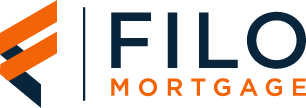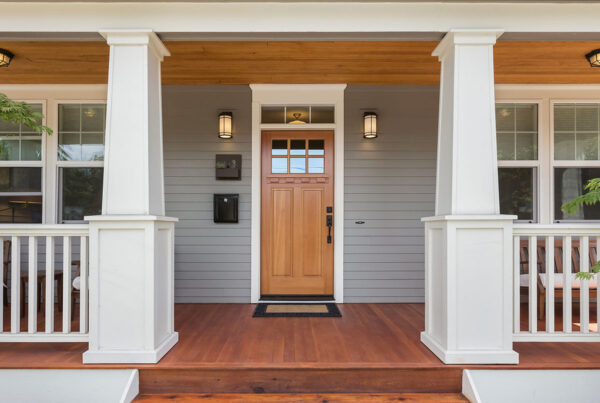There are many first-time homebuyer programs in California that can help you buy a house as a first-time homebuyer. To help Californians become homeowners during the difficult economic times we find ourselves in currently, borrowers may be eligible to take advantage of one of several CalHFA programs.
California offers both conventional mortgage programs and government mortgage programs that are exclusive to first-time homebuyers who qualify. Depending on your eligibility, you’ll want to explore what’s offered through both a conventional and government first-time homebuyer program in California before deciding what program is best for you.
CalHFA Conventional Loan Program
In an effort to expand homeownership for Californians, the CalHFA Conventional Loan Program was created. In this program, those who qualify can buy a home with only 3 percent down instead of the standard 20 percent. Many have used this program as a way to avoid PMI.
Not all those who would like to become homeowners can qualify for this type of loan. Income limitations apply; these income limits will vary specifically by county, but as of mid-2021, these household income limits tend to range from $139,000 and upward.
There are also property considerations to keep in mind when qualifying for the CalHFA Conventional Loan Program. The home to be purchased must be located in California and the borrower(s) must intend to occupy it as their principal residence. The property being purchased also cannot have been previously occupied by the borrower or have been financed with CalHFA funds within the past four years.
You will also be required to complete a Homebuyer Education and Counseling course, which can be completed virtually or online. If you have not taken the Homebuyer Education and Counseling course through an approved organization, your loan application can be delayed until it is completed. Please keep this in mind when applying for a CalHFA conventional loan, along with other important deadlines.
CalPLUS Conventional Loan Program
Combined with the Zero Interest Program (ZIP) to help homebuyers with closing costs, the CalPLUS Conventional program is another mortgage option for first-time homebuyers. Keep in mind that this fixed-rate mortgage is slightly higher than average rates for the CalHFA Conventional Loan Program. Criteria for qualifying is similar to the CalHFA Conventional Loan Program.
The “PLUS” in the name refers to the addition of a fixed deferred monthly payment called Mortgage Insurance Premium (MIP). This loan enables borrowers to get approved for up to 100 percent of their purchase price or appraised value, whichever is less.
CalHFA FHA Loan Program
CalHFA, along with the FHA , have created different loan programs to assist eligible California individuals and families with purchasing a new home. One of these options is the CalHFA FHA Program, which is a 30-year fixed-rate mortgage. By offering qualifying borrowers a low-interest FHA insured loan, this program gives first-time homebuyers the opportunity to purchase their first home, when it otherwise may not have been possible.
The California Department of Housing and Community Development (HCD) administers the CalHFA FHA Program, which offers low-interest rate mortgage loans to first-time homebuyers. The CalHFA FHA Program offers 100 percent financing options for first-time homebuyers with incomes at or below the county median income limits. The homebuyer pays an up-front mortgage insurance premium, or MIP, at 1 percent of the loan amount, depending on their LTV ratio and credit score.
CalPLUS FHA Loan Program
The CalPLUS FHA Loan Program is similar to the CalHFA FHA Loan Program in terms of eligibility. Although this program is combined with the CalHFA Zero Interest Program (ZIP) for closing cost assistance to offer optimal savings for borrowers, it does include a slightly higher interest rate compared to the CalHFA FHA Loan Program. It is also a 30-year fixed-rate mortgage.
CalHFA USDA Program
In addition to falling within USDA income limitations, borrowers interested in financing their home through the CalHFA USDA Program must be purchasing property that is classified as an eligible rural area in California. Qualifying borrowers participating in the CalHFA USDA Program may also be able to use this program in conjunction with the MyHome Assistance Program for closing cost and/or down payment assistance.
CalHFA VA Loan Program
If you qualify for a general VA loan as an active military or a veteran (or if you’re the spouse of an active member of the military or a veteran) and you’re looking to purchase a home in California, you may be eligible for financing through the CalHFA VA Loan Program. In addition to meeting the criteria for a VA mortgage, you will also be required to meet the same income limitations that the other CalHFA programs impose. Eligible properties include single-family homes and one-unit residences. Condominiums must be approved and meet certain guidelines, whereas in-law suites and guest houses may also be eligible. Manufactured homes are not eligible for the CalHFA VA Loan Program.
ADU Grant Program
Secondary dwellings on your property, such as an in-law suite or guest house, are often referred to as an Accessory Dwelling Unit (ADU). Eligible borrowers looking to construct an ADU may be eligible for a grant up to $25,000 through the Accessory Dwelling Unit (ADU) Grant Program.
Borrowers must meet income limitations and the property must also be located in a Qualified Census Tract.
MyHome Assistance Program
Qualifying borrowers in California may receive help with their down payment costs and/or closing costs through the MyHome Assistance Program. A wide range of properties are permitted under this program; borrowers must also meet income limitations and must also fulfill the Homebuyer Education Requirement that some of the other programs require.
The amount of assistance you’ll be eligible for will depend on the type of loan you’re taking out. If you are using the MyHome Assistance Program in conjunction with a CalHFA conventional loan, you may be eligible to receive a deferred-payment junior loan of an amount up to the lesser of 3 percent of the appraised value or purchase price, which can be used towards closing costs and/or down payment costs.
With a CalHFA FHA loan, borrowers seeking additional assistance through MyHome may be able to receive a deferred-payment junior loan of an amount up to the lesser of 3.5 percent of the appraised value or purchase price.
Regardless of whether you are taking out a CalHFA loan or CalHFA FHA loan, there is a $15,000 cap usually in place. Exceptions to this $15,000 cap include those taking out either a VA or USDA loan, as well as borrowers who qualify for CalHFA FHA Section 203(h) or CalHFA FHA Section 184. Borrowers purchasing manufactured homes, new construction homes, or homes with an ADU are also exempt from the $15,000 cap, in addition to borrowers who work in California schools or for the fire department.
Purchasing a home with little to no down payment
There are also several types of mortgages available to homebuyers throughout the United States, and not just California, that meet certain criteria and are looking to take out a mortgage with little to no money down. Some of these mortgage options include FHA loans, Conventional 97 loans, VA loans, and USDA loans. Learn more about all of the options available, and what is required to qualify for each type of these mortgages.
What are today’s mortgage rates in California?
When you’re ready to start the homebuying process, Filo Mortgage is here to help. Contact us today to learn more about the current mortgage rates in California, your different options for a mortgage, and to discuss the different California first-time homebuyer programs that are available.








